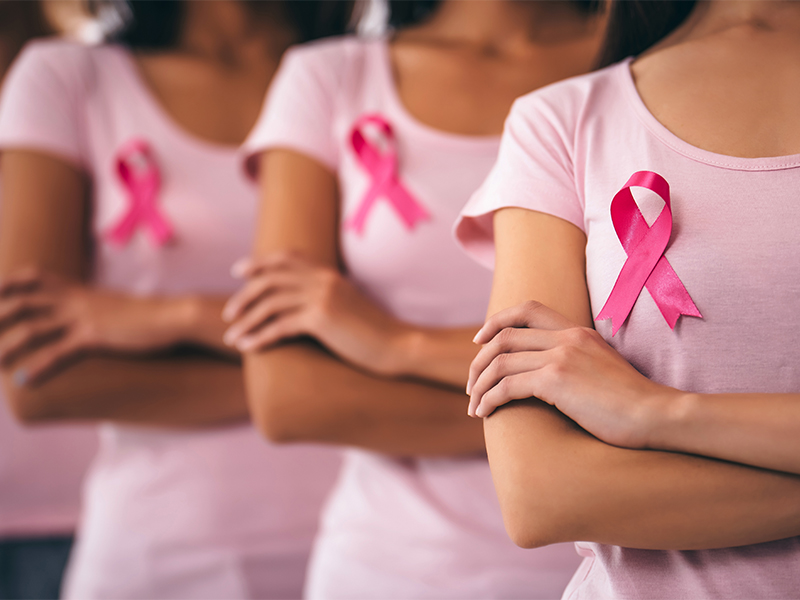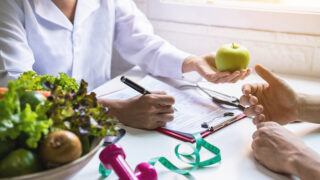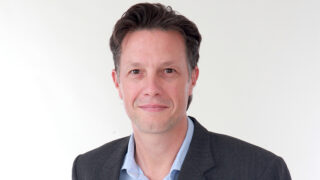What are the tell-tale symptoms of breast cancer? Can men get breast cancer? Are breast cancer screening tools like mammograms harmful? To mark Breast Cancer Awareness Month, we play a game of true or false with breast surgeon DR GEORGETTE CHAN. She sets the record straight on all of our burning questions.
#1 Breast cancer has a strong genetic link – False!
“Only five to 10 percent of all breast cancers are hereditary or caused by abnormal genes passed from parent to child,” reveals Dr Chan. This happens when BRCA1/2 and PALB2, typically helpful tumour suppressor genes, mutate, increasing the risk for patients to develop breast or ovarian cancer by five times. This is a sign that a large proportion of women who are diagnosed with breast cancer have neither a positive family history nor any genetic mutation.

#2 Breastfeeding decreases the risk of breast cancer – True!
Good news for breastfeeding mums: “Breastfeeding your newborn baby can protect you from developing breast cancer, especially if you have your children and breast feed at an early age – preferably less than 35 years old – and if you can nurse your baby for at least six to 12 months.”
#3 Birth control pills may cause cancer – True!
“There is a small increase in the relative risk of developing breast cancer in women taking combined oral contraceptives. The risk goes away quickly after stopping the pill. If there is a medical reason to take this, stop once you don’t need it anymore.”
#4 Men don’t get breast cancer – False!
Can men get breast cancer? Dr Chan tells us that breast cancer in men does occur, albeit rarely, at less than one in every one hundred cases diagnosed. However, about one in five men with breast cancer have a close relative who has also had breast cancer.
#5 Women under 40 don’t get breast cancer – False!
Women in their twenties and thirties can get breast cancer (although it is more common in women in their forties and fifties). Stay vigilant and self-examine your breasts regularly, Dr Chan advises. Among the symptoms of breast cancer are breast lumps, pain or nipple discharge. You may just detect the symptoms of breast cancer early enough to avoid radical surgeries and lengthy treatments.
#6 A lump in the breast is usually a symptom of breast cancer – False!
While lumps can be an important symptoms of breast cancer, don’t panic if you discover one. They are common and most of the time benign. In fact, normal breast tissue can become more prominent before a period. Two other common causes of benign breast lumps are fibroadenomas and cysts. So don’t shy away from seeing your doctor out of fear, and get these symptoms of breast cancer checked out!
#7 Overweight women are more prone to breast cancer – True!
Overweight and obese women – with a BMI of 23 or above – have a higher risk of getting breast cancer compared to women who maintain a normal weight. “This is especially important after menopause,” says Dr Chan.
#8 Mammograms can be harmful – False!
Breast cancer screening tools like mammograms neither cause breast cancer nor help spread the tumour. The amount of radiation received per mammogram is about 2 “rad” (radiation absorbed dose), an amount equalling two to three chest x-rays. Dr Chan reassures that modern mammography breast cancer screening equipment uses a very low dose of radiation that causes no long-term side effects.
#9 My breasts are too small to do a mammogram – False!
A skilled technologist in breast cancer screening knows how to image breasts of all sizes. “Small breast size does not prevent a woman from obtaining a meaningful mammogram, given that we occasionally have to do mammograms on men using the same machine!”
Dr Georgette Chan
#11-09 Mount Elizabeth Medical Centre, 3 Mount Elizabeth
6836 5167 | georgettechan.com.sg
This article first appeared in the October 2023 edition of Expat Living. You can purchase the latest issue or subscribe so you never miss a copy!
To make the most of living in Singapore, read our latest City Guide here for free!



